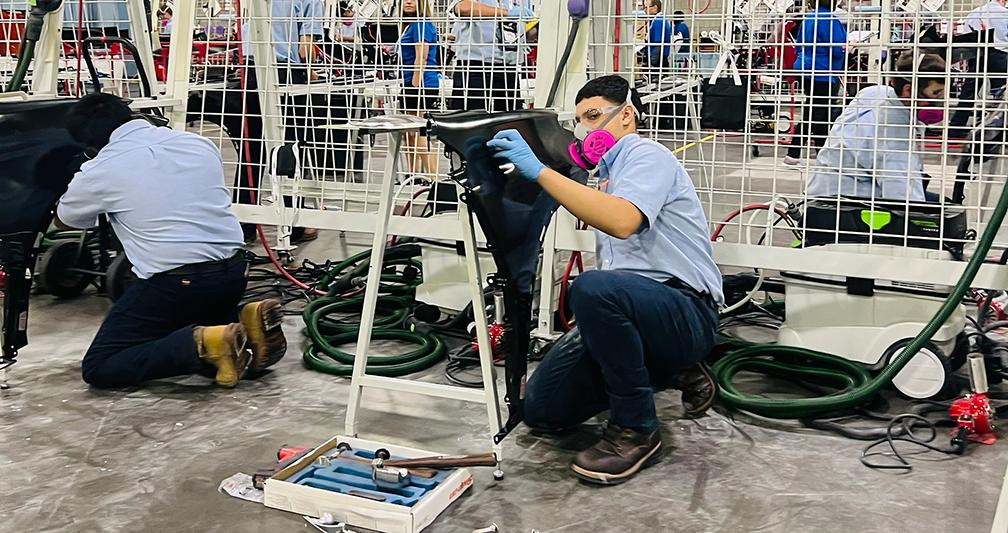SkillsUSA identifies 5 legislative recommendations to advance career and technical education | Repairer Driven News
SkillsUSA recently announced five federal legislative recommendations that it says will advance opportunity through career and technical education.
“Career and technical education (CTE) equips students with the skills, confidence, and real-world experiences they need to succeed in today’s rapidly changing economy,” a SkillsUSA flier says. “Whether they are just beginning their education journey or returning to the classroom to re-skill or upskill, CTE learners are preparing for the jobs that power our communities and strengthen our future.”
The five recommendations include:
SkillsUSA suggests increased funding in the Carl D. Perkins Career and Technical Act’s (Perkins V) Base State Grant as an investment in the nation’s infrastructure. It says that the grant is a cornerstone of federal support for CTE, yet current funding levels remain well below what is needed to meet current needs and growing demand.
It also asks for support in funding CTE systems and programs that connect learners to growing sectors of the American economy and support diverse geographic areas throughout the nation.
“Congress must increase funding to support real-world learning experiences, expand access in both rural and urban communities, and help students stay current with the tools and technology shaping today’s workplaces,” a SkillsUSA blog post says.
Funding of innovative CTE programs, such as artificial intelligence and broader technology advancements, is another need to support the infrastructure, the flier says.
SkillsUSA asks for the federal government to maintain a commitment to public education systems that offer CTE, oppose efforts to divert funds away from the schools and institutions that deliver high-quality, skill-based education, and ensure that dedicated federal CTE investments remain targeted to public education systems.
“We believe it’s critical to protect CTE’s role in public education,” the blog post says. “Public high schools and community colleges are where most students encounter CTE opportunities, and we cannot allow those opportunities to erode. That means maintaining robust support for these institutions and ensuring that all learners, regardless of zip code, can access high-quality CTE programs.”
The organization also urges Congress to expand federal Pell Grant program eligibility for high-quality, shorter-term CTE programs and dedicate funding for open-access postsecondary institutions, such as community and technical colleges and area technical centers.
Congress is asked to promote legislation that supports the alignment and coordination between Perkins and the Workforce Innovation and Opportunity Act (WIOA) and establish consistent standards and definitions of youth apprenticeships, pre-apprenticeships, and registered apprenticeship programs.
Lastly, Skills USA asks Congress to support policies that make teaching a competitive and attractive option for skilled trade professionals, expand access to CTE-specific teacher training and professional development, and encourage state licensure reciprocity to increase instructor mobility.
“CTE programs depend on skilled, passionate instructors, but attracting and retaining professionals from the trades into the classroom is an ongoing and persistent challenge,” the blog post says.
Earlier this week, CBS spoke with Philadelphia-area students and graduates who expressed concerns about federal government plans to pause Job Corps centers across the country by June 30. The program helps young adults earn a high school diploma while receiving hands-on job training in the field. The program was established under the WIOA.
Sincere Shaw, 17, was months away from graduating when his program email and account access were deactivated, according to CBS.
Shaw said he was skipping class before joining the program. However, that behavior changed when he started a carpentry track through Job Corps.
“I just feel like it’s a big difference for me, and I really love it here, and I hope it [doesn’t] change,” he told CBS.
The U.S. Department of Labor issued a press release last week that says the Job Corps program has faced significant financial challenges under its current operating structure, including a $140 million deficit.
A Jobs Corps transparency report found the average graduation rate for WIOA to be 38.6%, the release said. It also states that the average annual cost per student is $80,284, and the average total cost per graduate is $155,600.
“Job Corps was created to help young adults build a pathway to a better life through education, training, and community,” said Secretary Lori Chavez-DeRemer, in the release. “However, a startling number of serious incident reports and our in-depth fiscal analysis reveal the program is no longer achieving the intended outcomes that students deserve. We remain committed to ensuring all participants are supported through this transition and connected with the resources they need to succeed as we evaluate the program’s possibilities.”
IMAGE
Photo courtesy of Nalinee Supapornpasupad/iStock
Share This:










